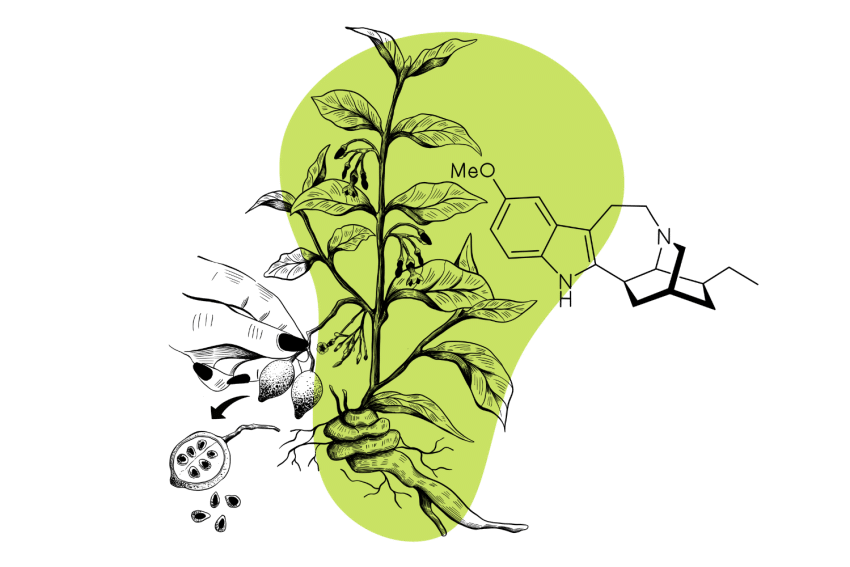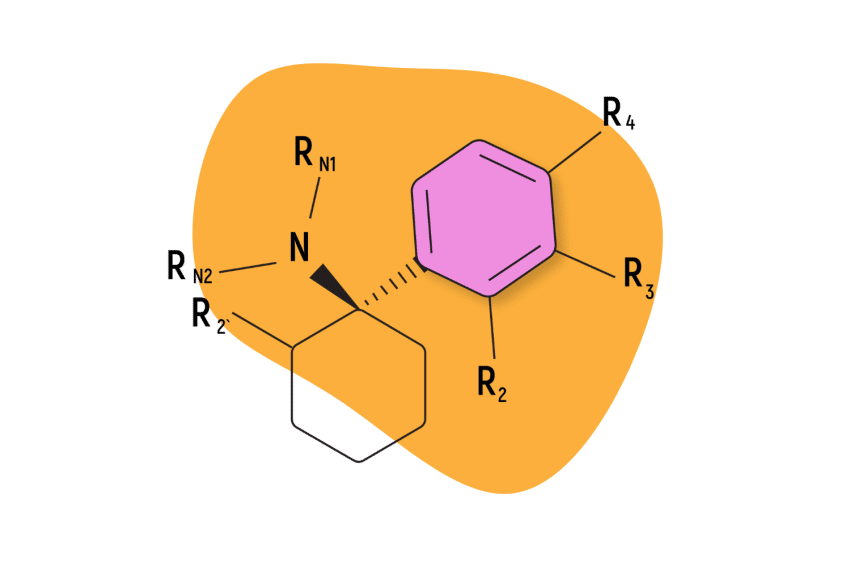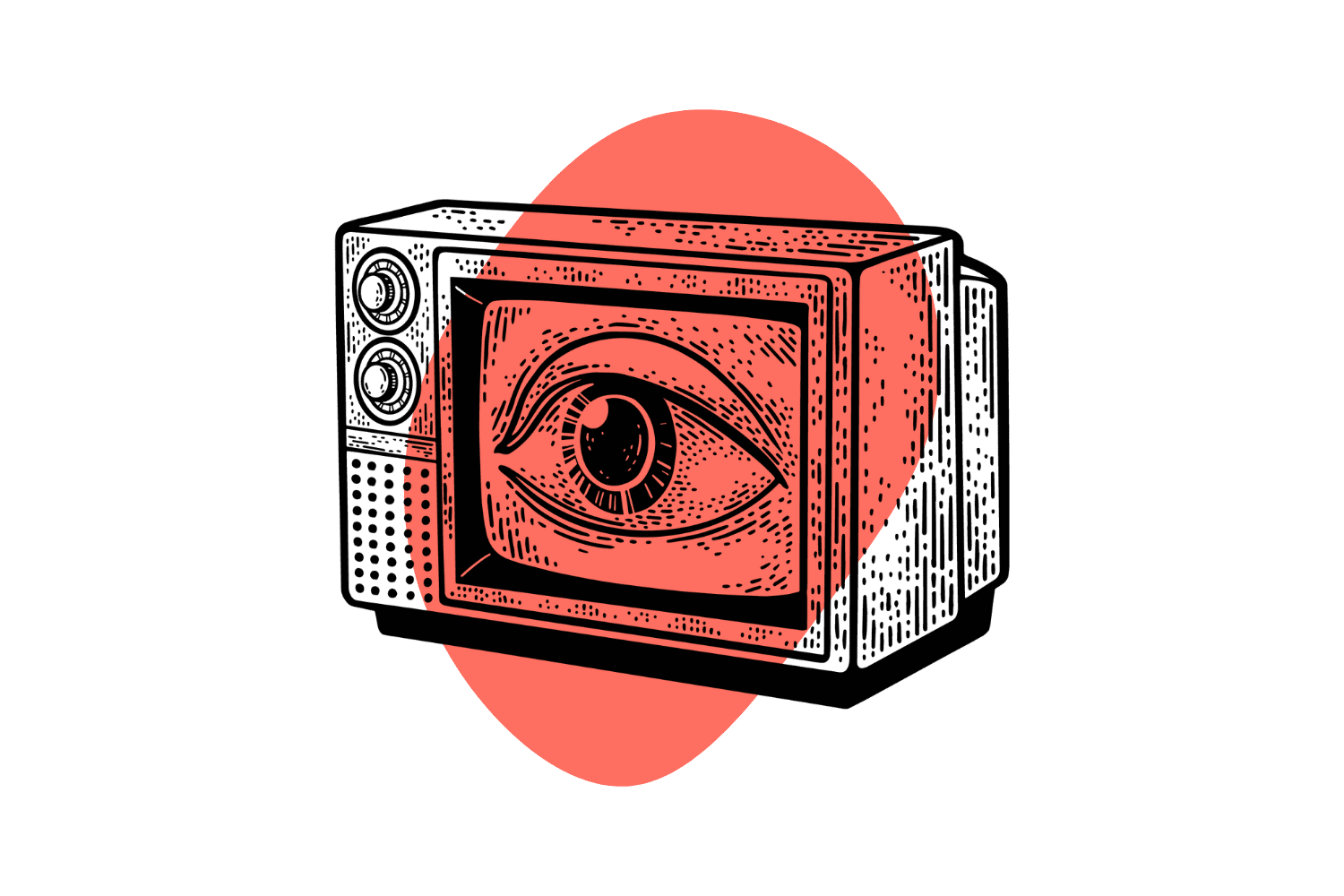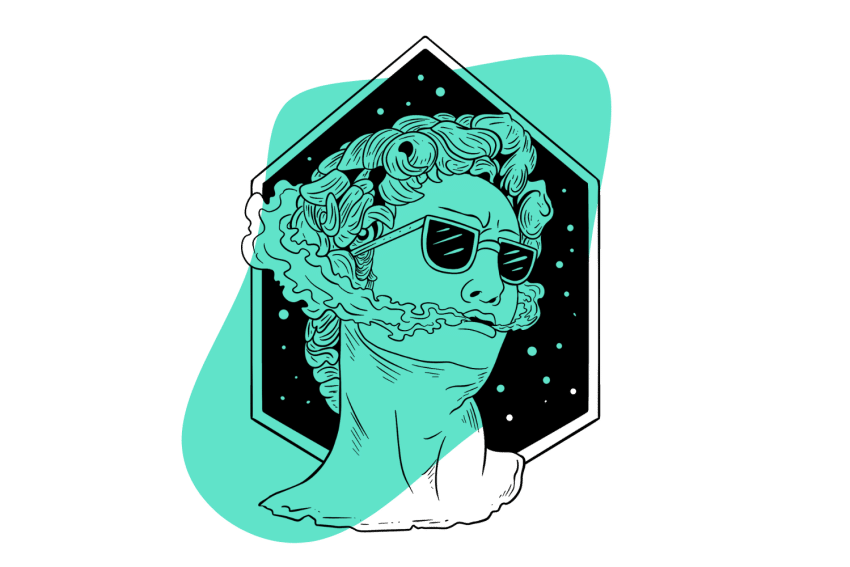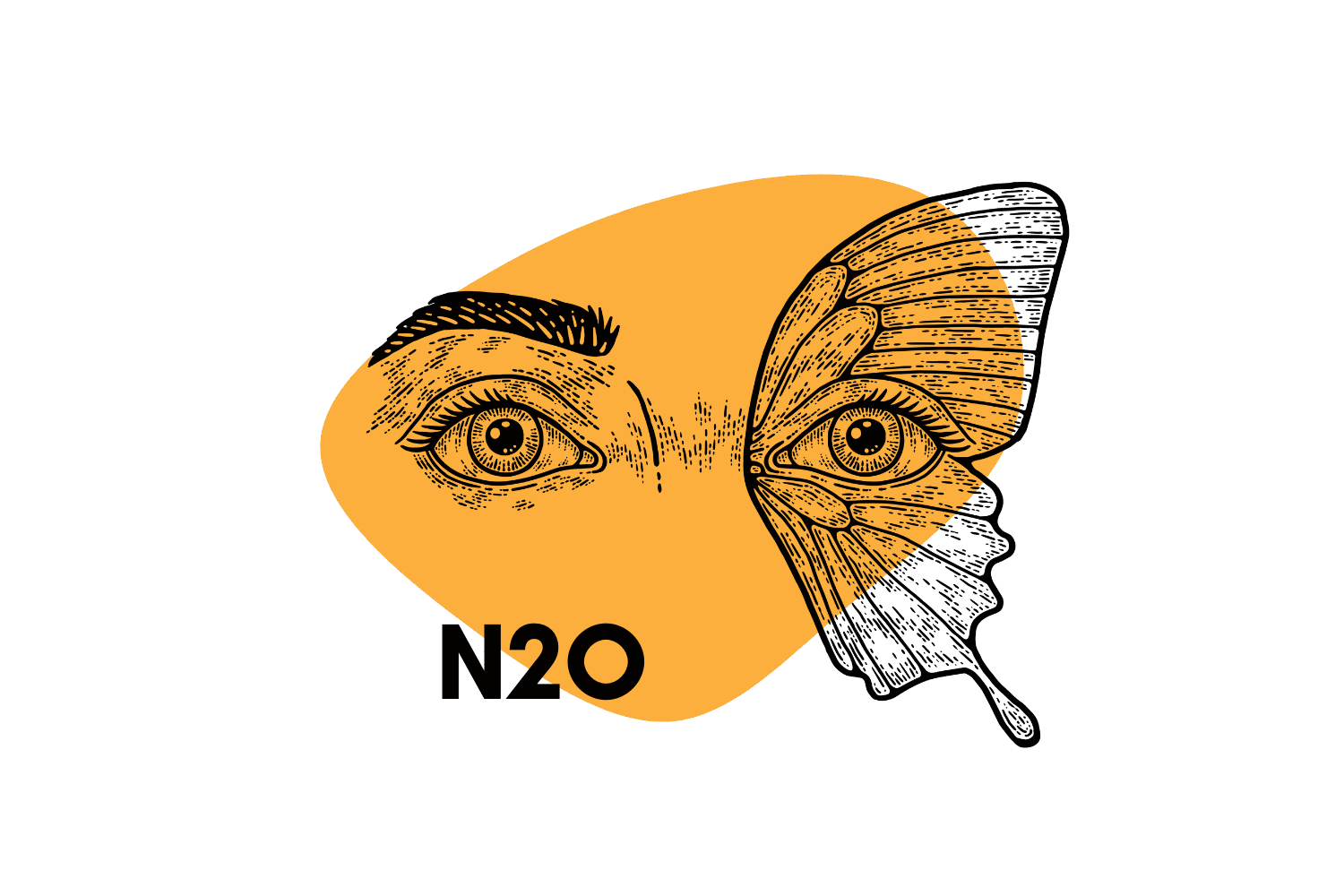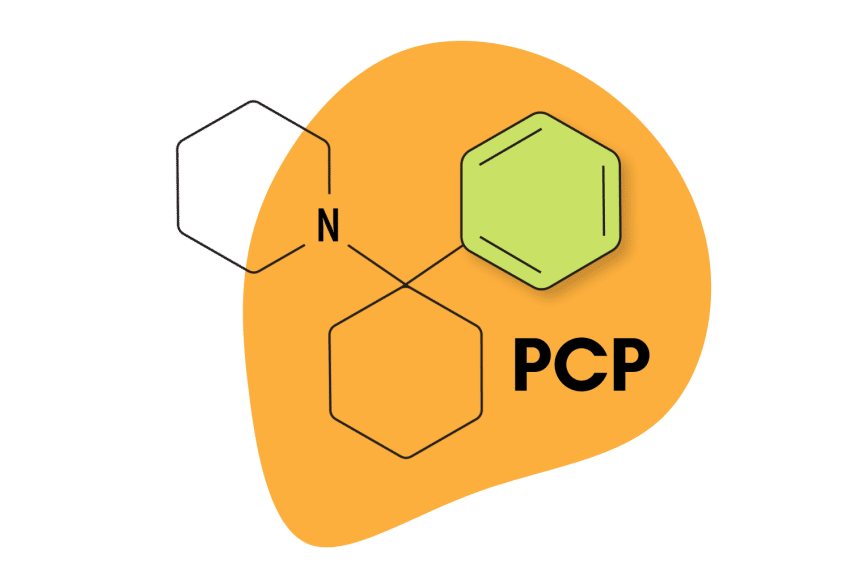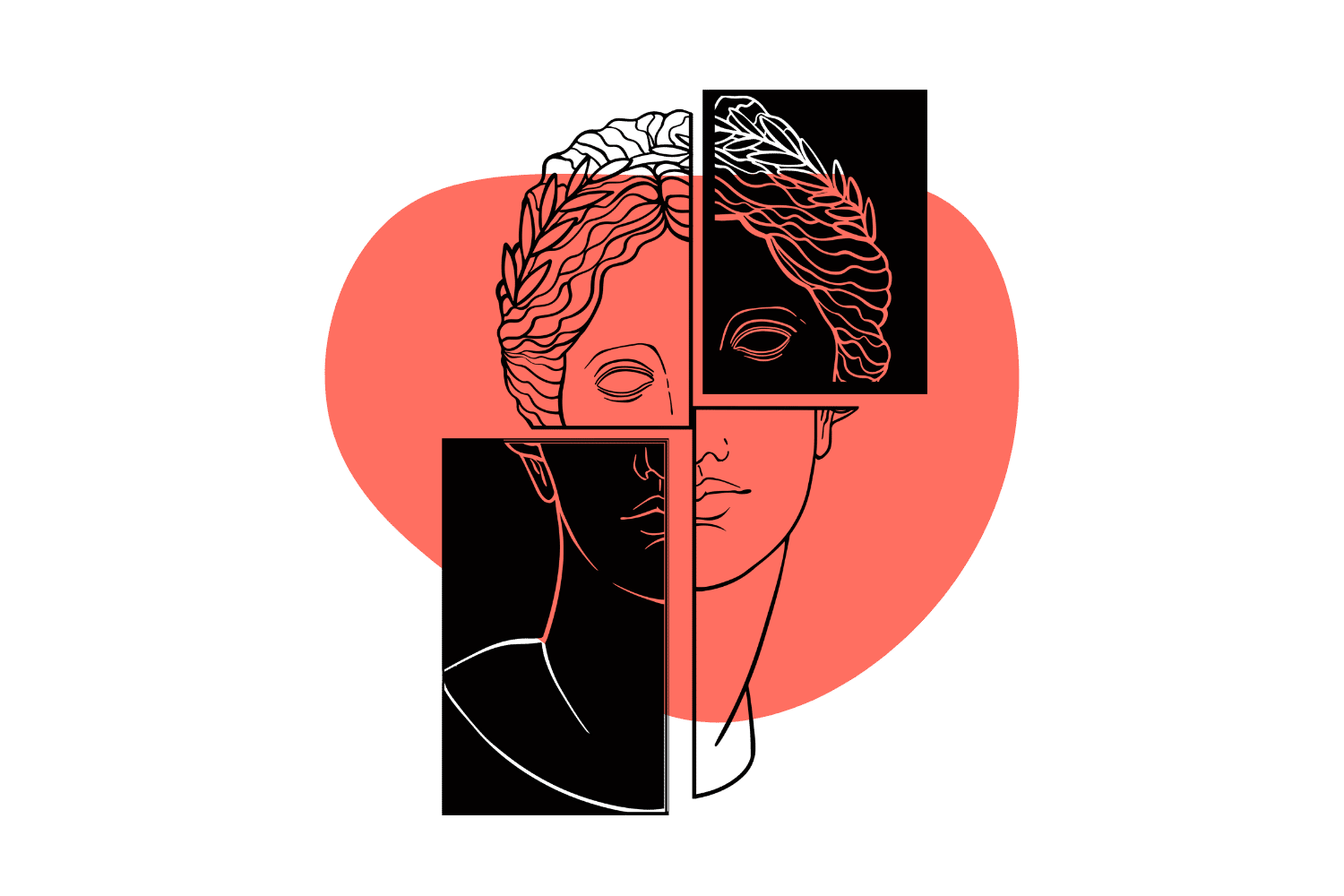Ketamine 101: Uses, Safety, & Dosage
Ketamine was invented to replace PCP as an anesthetic. Today, it’s considered one of the premiere treatments for depression. Here’s how it works.
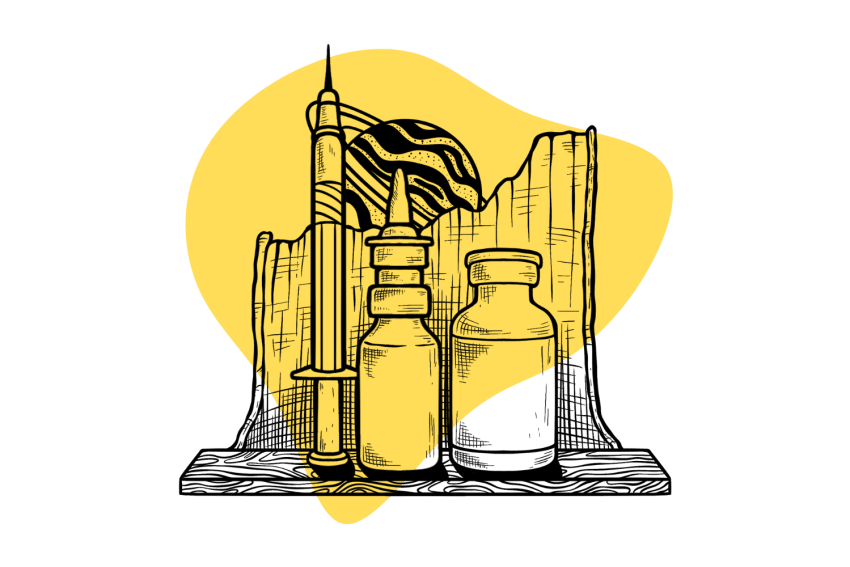
Ketamine has been around since the 1960s where it was used exclusively as a surgical anesthetic.
Over the past three decades, there’s been a growing interest in ketamine as a recreational hallucinogenic and dissociative drug.
Even more recently, ketamine has been shown to offer a unique mechanism for treating depression — unlike anything we’ve ever seen before.
In this article, we’ll cover everything you need to know about ketamine. How it works, what the basic dosages are for each level of effects, and more.
What is Ketamine?
Ketamine is classified as a dissociative hallucinogenic — which distorts the perception of sights, sounds, emotions, and decouple one’s first-person experience from reality. Users feel “outside their body.”
Chemically-speaking, ketamine is a member of the larger arylcyclohexylamine class of drugs. This group includes other popular compounds like PCP (phencyclidine), DCK (deschloroketamine), 2-FDCK (2-fluorodeschloroketamine), and MXE (methoxetamine).
In medicine, ketamine is used as an analgesic. It doesn’t directly block pain signals like an opiate — instead, dissociative analgesics disconnect the thalamus from the cortex. When this happens, the body still feels pain, but the brain simply “doesn’t care.” We don’t actually feel bothered by the pain.
Experts on the use of ketamine, such as Albert Dahan (professor of anesthesiology at The University of Leiden), suggest ketamine to be “one of the best painkillers ever made.”
Beyond its use as a painkiller, ketamine is used as a recreational drug (illegally). The experience changes according to the dose.
Lower doses feel a lot like being drunk on alcohol.
Higher doses are more similar to psychedelics like DMT or salvia, but with a distinct dissociative action on top of any psychedelic visuals or effects.
A high dose of ketamine can lead to an experience called a “K-hole” — which is an extremely intense dissociative hallucination that can be both beautiful and terrifying all at once.
More recently, research has shown that low doses of ketamine offer powerful antidepressant qualities. It works through entirely different mechanisms than conventional antidepressant medications.
Unlike most drugs, ketamine targets many different receptors at once, making it very difficult to study exactly what’s going on or how it works.
There’s currently one FDA-approved ketamine spray called Spravato® — which is prescribed for treatment-resistant depression (depression that doesn’t improve with conventional medications).
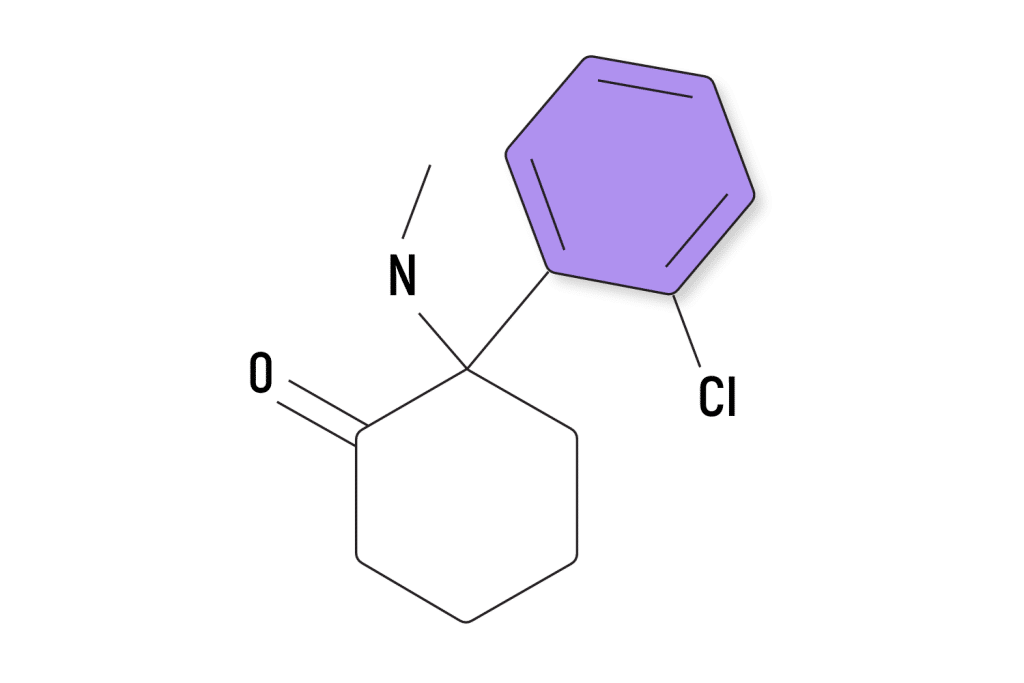
Ketamine: Specs & Technical Details
| Active Ingredient | (S & R)-2-(2-chlorophenyl)-2-(methylamino) cyclohexanone |
| Level of Risk | Moderate |
| Other Names | Special K, Cat Tranquilizer, Vitamin K |
| Most Common Side Effects | Disinhibition, nausea, loss of muscle coordination |
| Duration of Effects | 1 – 3 hours |
| Legality | Available by prescription only |
Other Names for Ketamine
Ketamine is sold under a wide range of different street names as well as various pharmaceutical trade names.
Here are some of the other names for ketamine:
| Street Names | Pharmaceutical Trade Names |
| Special K Super Acid Keller Blind Squid Special LA Coke Honey Oil Cat Valium Ket K Horse Tranquilizer | Ketalar Ketanest Ketaset Kalipsol Spravato KetaVed Vetalar Imalgene |
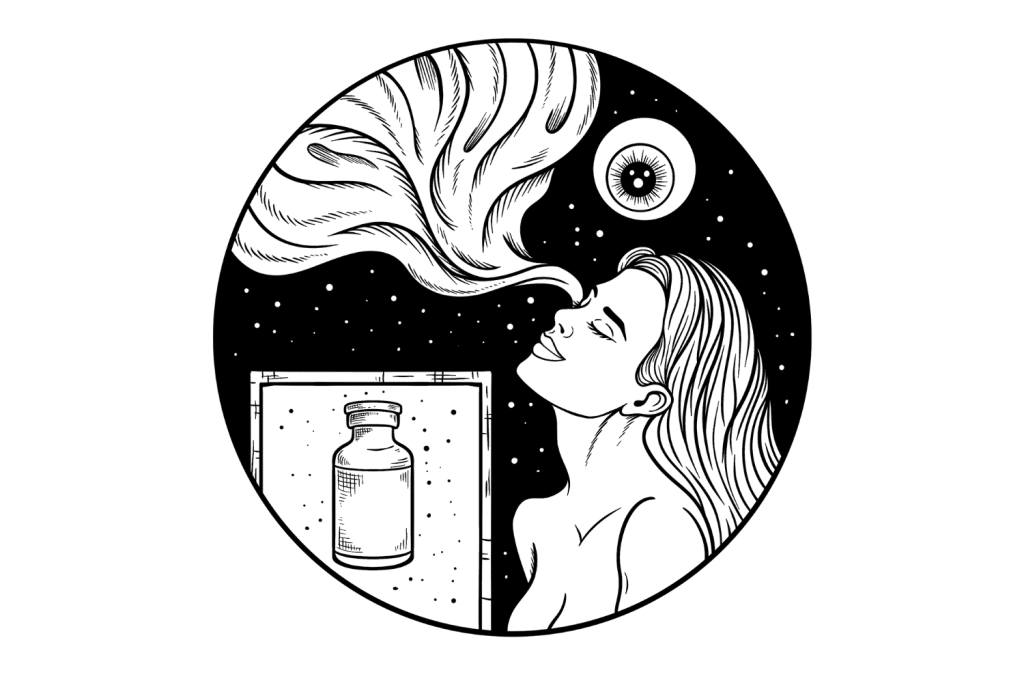
What Does Ketamine Feel Like?
The effects of ketamine are dependent on the dose you use, your individual body weight and metabolism, how often you use it, what form you’re using (intravenous, troches/lozenges, intranasal), and whether you’re using ketamine alone or with other substances.
In lower doses, the effects of ketamine resemble alcohol intoxication. It causes feelings of mild euphoria, as well as visual and auditory perceptual changes. It makes users feel as though they’re floating or operating on autopilot. Low doses are mildly stimulating and can make users feel more social or energetic.
Higher doses of ketamine feel very different. They can make you feel withdrawn and introverted. People often report feeling very light and floaty and often experience intense hallucinations, blurred vision, and out-of-body experiences.
In very high doses, people experience what’s commonly referred to as a K-hole — which involves strong out-of-body hallucinations. This is a demonstration of the dissociative aspect of ketamine to its fullest extent. Users feel as though they’re perpetually falling into blackness. It’s as if the fabric of time, as well as one’s sense of self is dissolving.
Some describe the K-hole experience to be like “peering into the keyhole of existence.”
A K-hole can feel both terrifying and exhilarating at the same time.
The effects of ketamine may include:
- Difficulty thinking logically
- Reduced anxiety
- Euphoria
- Déja Vu
- Delusions & ego inflation
- Disinhibition
- Memory loss
- Spatial disorientation
- Altered perception of time & space
- Sedation or fatigue
- Spontaneous bodily sensations (tingling, pulsating)
- A feeling of being light or floating
- Loss of muscle coordination or control
- Reduced sensation of pain
- Increased salivation
- Lowered libido
- Nausea & vomiting
- The feeling of being on “autopilot” or not in control of your body

How Long Does Ketamine Last?
Ketamine is not a long-lasting drug. The effects usually take between 30 and 60 minutes to reach their full effect, which remain in place for about an hour before starting to taper off. These numbers will vary depending on the form of administration.
- Insufflated (snorted) — Effects kick-in within 5–15 minutes. Peak effect reached in 30 minutes. Total duration between 1 and 3 hours depending on dose.
- Intravenous (IV) — Effects kick in within 60 seconds. Peak reached in 3–5 minutes. Total duration between 40 and 60 minutes. Some lingering effects up to 2 hours.
- Sublingual — Effects from troches or lozenges kick in within 5-10 minutes. Peak effect reached in 30 minutes. Total duration between 1–3 hours depending on dose.
- Oral — Effects kick in within 20-30 minutes. Peak reached by 60 minutes. Total duration 2–4 hours.
- Intramuscular (IM) — Effects kick in within 1–5 minutes. Peak effects in 10–15 minutes. Total duration up to 2 hours.
- Rectal/Suppositories — Effects kick in within 15–20 minutes. Peak effects reached in 30-40 minutes. Total duration 1–2 hours.
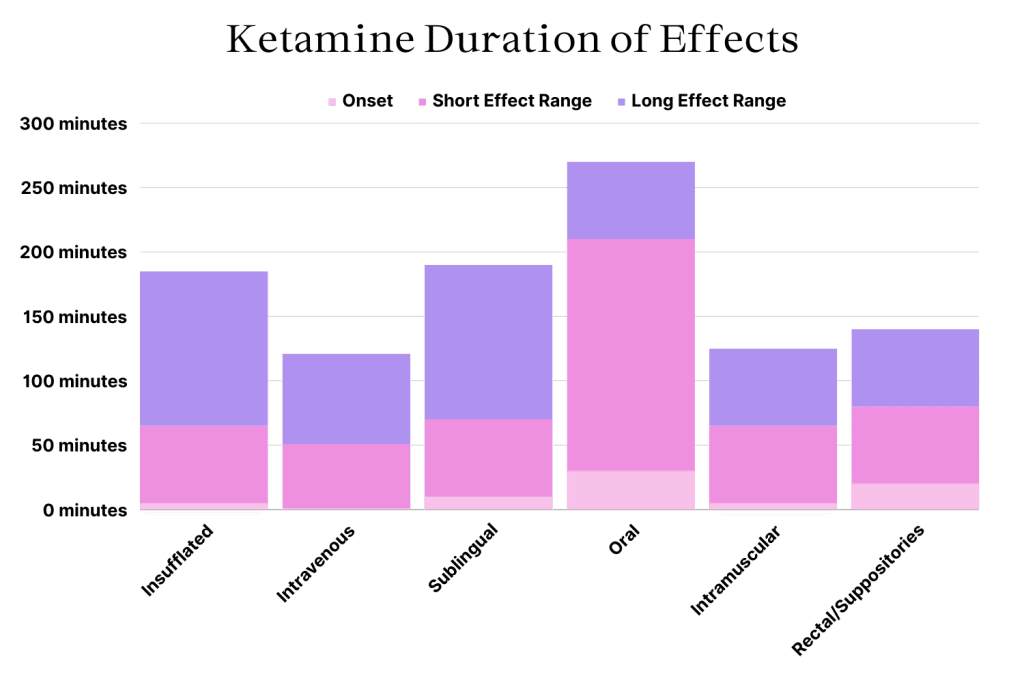
How Long Does Ketamine Remain in the System?
Ketamine is rapidly metabolized by the liver into norketamine and other inactive metabolites, which are then eliminated through the urine.
The half-life of ketamine is 2.5 hours and it takes about 5 or 6 half-lives before a drug is completely cleared from the body. This means ketamine can remain detectable in the bloodstream for around 15–24 hours, depending on factors like dosage and frequency of use.
People who use ketamine often will take longer for the drug to be eliminated from the body entirely. This can take up to 48 hours in the bloodstream, and up to 72 hours in the urine.
All of this means that ketamine will typically show up on a drug test up to 24 hours for saliva tests, 48 hour later for urine and blood tests, and 4 months for hair or fingernail tests.
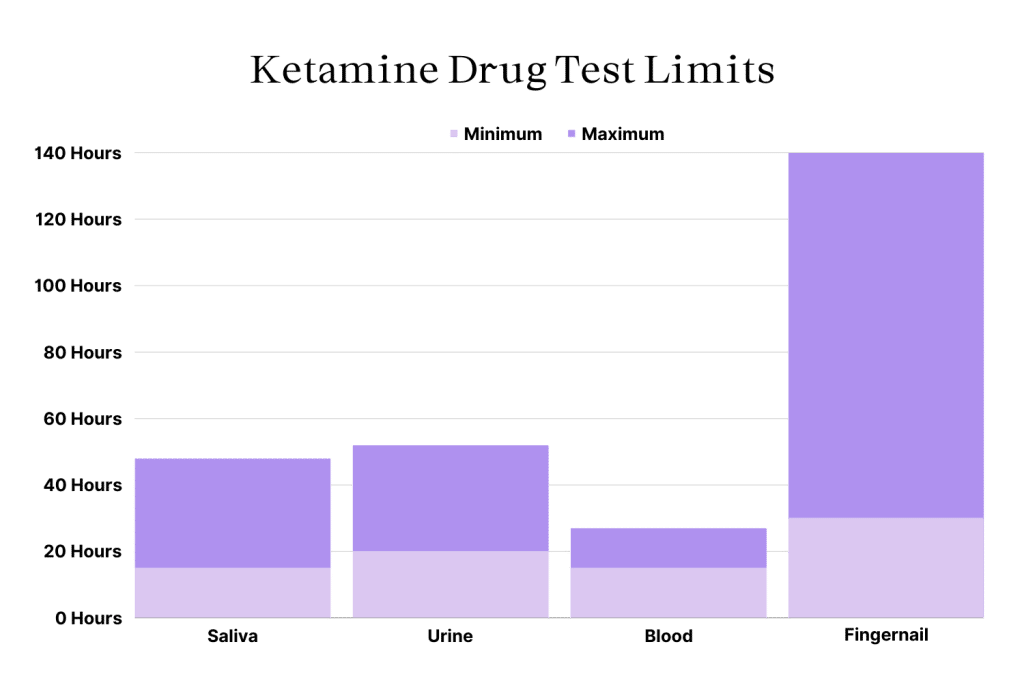
What’s The Dose of Ketamine?
Ketamine is highly dose-dependant — meaning the effects of high dose ketamine is dramatically different from low-dose ketamine.
The threshold dose refers to the smallest dose that produces noticeable psychoactive effects.
The lower dose ranges of ketamine — starting with the threshold dose — produces mild alterations in perception and feels most similar to GHB or alcohol. Lower doses create a sense of disinhibition, mild dissociation and depersonalization, and is even slightly stimulating. This makes low dose ketamine a popular party drug.
The standard psychoactive dose refers to the most common psychoactive dose range used for a given drug. This is the dose range that produces all the characteristic effects expected of ketamine — strong dissociation, visual and auditory perceptual changes, and sometimes even out of body experiences.
High doses produce significantly more dissociative and out-of-body experiences. Very intense dissociation from ketamine is referred to as a K-hole — which begins somewhere around the 200 mg mark for oral and sublingual ketamine.
Ketamine Dosages According to Form of Administration
| Form of Administration | Threshold Dose | Standard Dose | High Dose |
| Oral (Tablets) | 50 mg | 100–250 mg | 250–500 mg |
| Sublingual (Troches & Lozenges) | 50 mg | 100–250 mg | 300–250 mg |
| Intranasal (Sprays & Powders) | 5 mg | 30–80 mg | 80–150 mg |
| Intramuscular (IM) | 3 mg/kg | 6–13 mg/kg | >15mg |
| Intravanous (IV) | 1 mg/kg | 0.5 mg/kg/min | >15 mg |
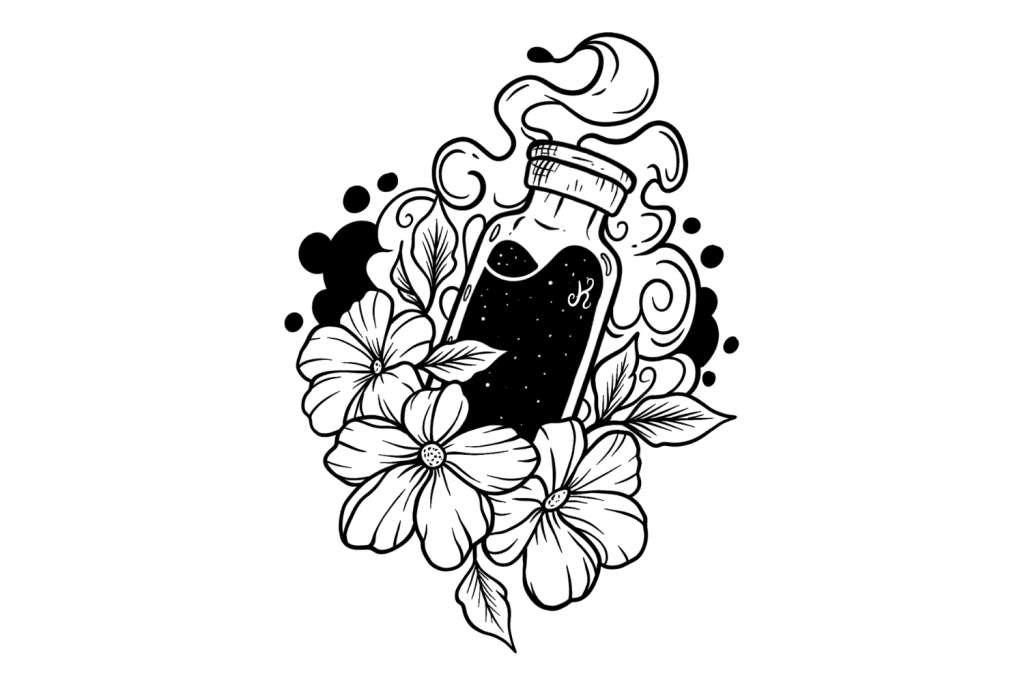
What is Ketamine-Assisted Psychotherapy?
The field of psychedelic-assisted psychotherapy (PAP) is growing at an exponential rate.
So far, the only psychedelic that’s been approved for use in therapy is ketamine, but MDMA-assisted therapy and psilocybin-assisted therapy are both just around the corner.
Over the last 50 years, there have been over 70 individual Phase II clinical trials exploring the benefits of ketamine for conditions such as depression, obsessive-compulsive disorder (OCD), post-traumatic stress disorder (PTSD), drug addiction, and much more. This has fuelled a boom in the number of clinics around the world offering off-label ketamine for a wide range of mental health disorders.
At the moment, ketamine is only approved by the FDA as a form of anesthesia during surgery — with the exception of Spravato Ketamine Nasal Spray which is approved for treatment-resistant depression. Most of the ketamine being used with ketamine-assisted therapy are not formally approved by the FDA or equivalent regulators around the world.
There are 2 main forms of ketamine-assisted therapy in practice today:
- In-Person Ketamine Therapy — In-person clinics are the only way to get the more powerful IV or IM ketamine injections. This form of therapy is expensive in the short-term, but carries the greatest chances of getting longer-lasting results.
- Online (Telehealth) Ketamine Therapy — Positioned as the most affordable form of ketamine therapy. It involves an online consultation to attain the prescription needed to continue therapy. Ketamine lozenges are then sent in the mail and sessions are monitored through online video platforms.
- Spravato Nasal Spray — As the only FDA-approved use of ketamine for treating depression, this ketamine preparation has been gaining a lot of popularity lately and is covered by some insurance providers in the US.
Related: Does Ketamine Therapy Get You High?
How Much Does Ketamine Therapy Cost?
Ketamine is promised as a quick, long-term solution to mental health conditions like depression, PTSD, and addiction. Ketamine providers are using this argument to justify the relatively high cost of treatment.
However, this isn’t how it’s been playing out in practice. Ketamine therapy users tend to require ongoing treatment — so therapy can get expensive, quickly.
Here’s what you can expect for the first month of ketamine therapy depending on the type of treatment you’re seeking. Note that consecutive months tend to be cheaper thanks to refill discounts offered by many (but not all) companies in this space.
| Form of Ketamine Therapy | Sessions In First Month | Approx. First-Month Price | Average Cost Per Session |
| Telehealth (Online Ketamine) | 4–8 | $1000–$1500 | $150 |
| In-Person IV Ketamine | 6–8 | $2800–$8,000 | $350–$500 |
| Spravato Prescription | 8 | $3,200 | $400 |
Ketamine infusions tend to be the most expensive upfront — costing between $350 and $500 for a single session (usually purchased in packages of 6 to 8).
Online ketamine clinics boast cheaper per-session costs (around $150–$200 per session), but often fail to provide enough adjunctive support for users to stop taking ketamine without relapsing.
Spravato ketamine nasal spray is the most expensive form of ketamine therapy outside of the luxury clinic experiences which can extend into the thousands of dollars per session.
Related: How Much Does Psychedelic-Assisted Psychotherapy Cost?
Is Ketamine Therapy Covered By Insurance?
Most insurance providers won’t cover the cost of ketamine therapy. The landscape surrounding psychedelic-assisted therapy is continually evolving, and more providers are adding ketamine to their premium-tier packages all the time — but this is highly dependant on the individual provider and which plan you’re on.
Some companies, such as Blue Cross Blue Shield, Gilsbar, Zelis/ PPO Plus, United Healthcare, United Behavioral Health, and Cigna Behavioral Health are now covering some or all of the cost for Spravato ketamine nasal spray, but not other forms of ketamine therapy. This is largely because Spravato is the only FDA-approved ketamine treatment for depression.
Who is Not a Good Candidate For Ketamine Therapy?
While ketamine is widely considered a “low-risk” drug — there are situations where ketamine can pose an elevated risk. Not all people are suitable for ketamine therapy.
Avoid ketamine therapy if you have any of the following:
- A history or family history of schizophrenia or psychosis
- Have not first attempted treatment with other (approved) medications or therapies
- A history of cardiovascular disease, including hypertension
- A history of bladder, kidney, or liver disease
- A history of substance abuse disorder
- Are unable to understand and provide informed consent
- Are pregnant or nursing
- Have known allergies to ketamine or other arylcyclohexylamines
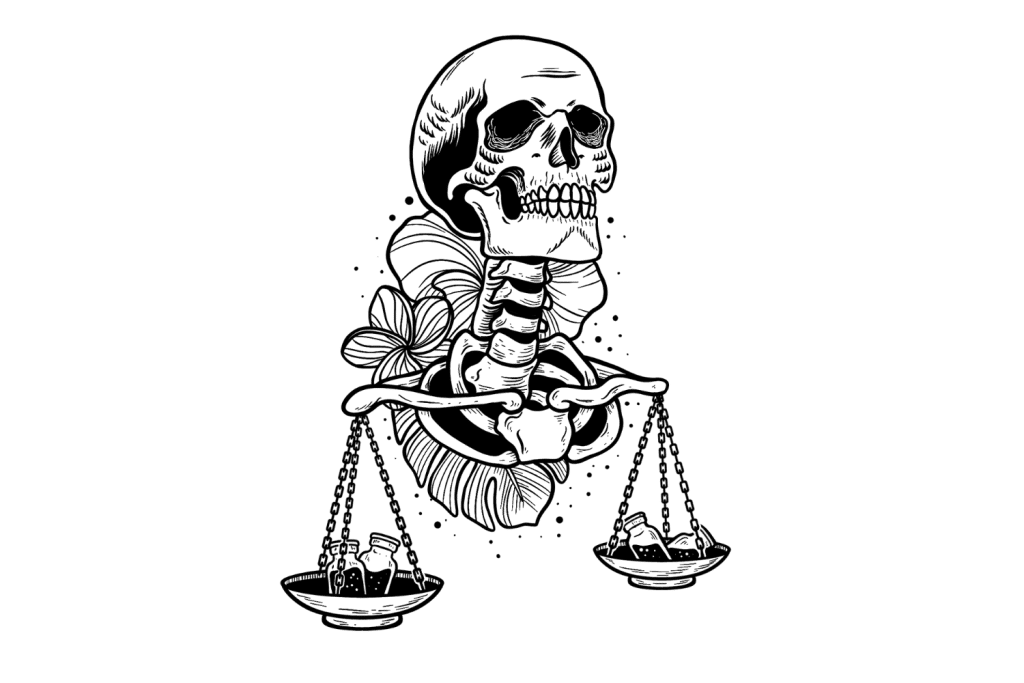
Is Ketamine Legal?
Ketamine is available via prescription only. It’s mainly reserved for emergency medicine and surgery.
Some doctors may prescribe ketamine for the treatment of pain (usually in combination with an opiate), as well as for depression — but only when other treatments have been attempted first.
There are no countries where ketamine is legal for recreational use. This means any ketamine you order online or in-person without a valid prescription is illegal or black market ketamine. Some of this black market ketamine is stolen from veterinarian supplies — some are made in an illicit lab with varying levels of purity.
While we never condone the use of illicit drugs, we’d like to remind you to always test your drugs before you use them should you choose to do so. One of the biggest risks of taking black market ketamine is the adulteration with other dangerous drugs — such as NBOMes or fentanyl.
There are a few prescription ketamine drugs on the market today, including:
- Ketalar® — JHP Pharmaceuticals
- Ketaject® — Phoenix Pharmaceuticals
- Ketaset® — Zoetis
- Spravato® — Johnson & Johnson
Ketamine Risks & Side Effects
Overall, ketamine is considered very safe and is unlikely to lead to overdose — unless mixed with other drugs or alcohol.
As an analgesic, ketamine is one of the safest drugs available and isn’t nearly as likely to lead to respiratory or cardiovascular emergencies compared to other analgesics.
While ketamine is addictive, it has a much lower risk of addiction compared to other prescription medications — especially pain medications or antianxiety medications.
With that said, ketamine does come with inherent risks:
- Ketamine can increase the risk of heart attack or stroke
- Frequent use has been linked with bladder disease
- Blackmarket ketamine may be laced with other, more dangerous drugs
- Ketamine is often used as a date rape drug
- Ketamine can interfere or interact with other medications or alcohol
- Ketamine stops you from feeling pain, increasing your risk of developing serious injuries
- Ketamine can be addictive with more frequent use
- The psychoactive effects of ketamine can be terrifying and may trigger psychosis in susceptible individuals
It’s important to have a trip sitter around and follow the four pillars of safe psychedelic use if you plan on experiencing the deeper levels of ketamine (K-hole).
This experience will cause you to lose control of your body and can be extremely terrifying. So it’s critical that you have someone you trust nearby, and only take the drug in a safe and comfortable environment.
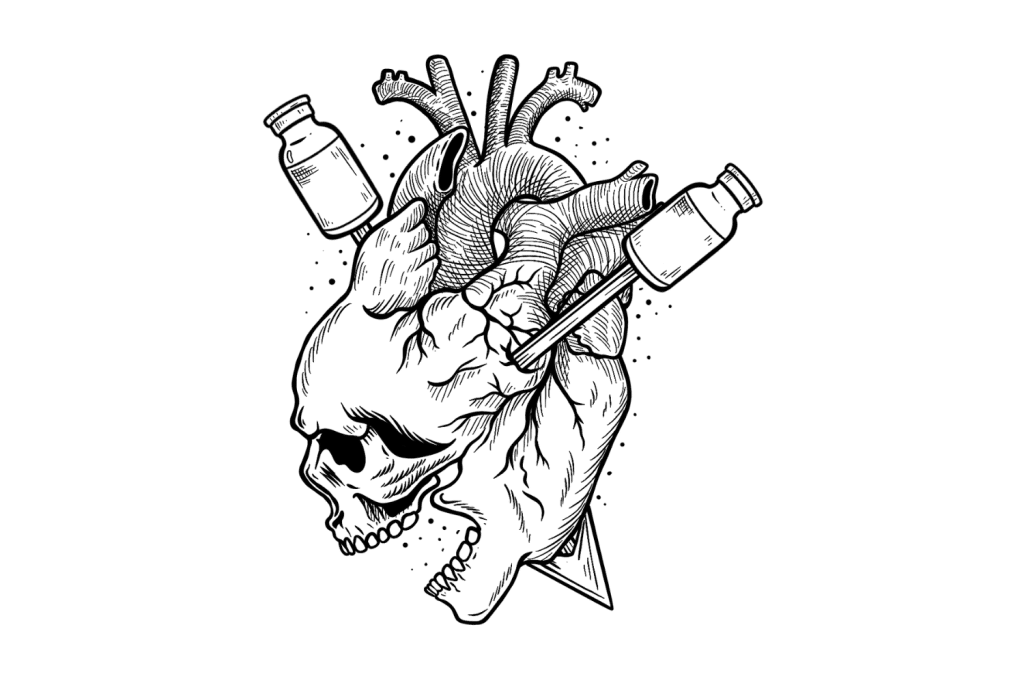
Side Effects of Ketamine
The most common side-effects of ketamine are dissociation (sometimes considered a primary effect), high blood pressure, and tachycardia (rapid heart rate).
These side effects are rarely severe, and tend to only pose danger to those with prexisting cardiovascular disease or those taking other medications that affect heart rate and blood pressure.
Side effects of ketamine include, but are not limited to:
- High blood pressure
- Nausea & vomiting
- Perceptual disturbances
- Loss of coordination
- Slurred speech
- Intoxication & disinhibition
- Anxiety
- Bladder pain
- Dissociation (out-of-body experiences)
Is Ketamine Addictive?
Ketamine is addictive and is often abused.
While it’s still not clear whether ketamine is physically addictive, you can develop tolerance — which means you’ll need to take a higher dose of the drug to get the same experience.
Users become addicted to the dissociative effects of the drug. They compulsively use the substance as a way to find an escape from their reality — which may feel objectively painful or uncomfortable. Addiction is defined as any act of compulsively using a substance (or activity) to find relief, despite clear negative consequences to using the drug.
Most people don’t experience withdrawal symptoms after stopping ketamine — with the exception of cravings for more ketamine (this is considered a psychological dependency). Physically, ketamine is less addictive than drugs like opiates, alcohol, amphetamines, or benzodiazepines.
With that said, heavy users may experience sleep disturbances, tremors, sweating, rapid heart rate, appetite loss, erectile dysfunction, and fatigue for a few days.
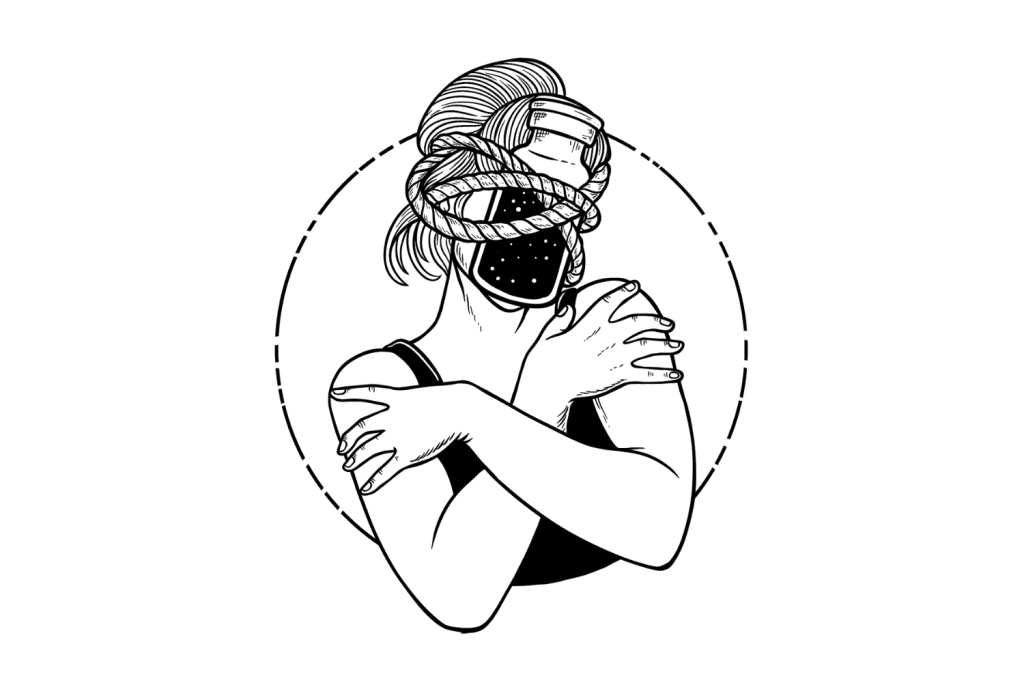
Ketamine Overdose
One of the biggest advantages ketamine brings to the medical field is it’s low-risk of causing overdose. Ketamine doesn’t affect respiration the way opiates do, and it has only a minor impact on the heart, brain, and other internal organs — even in high doses. It’s also relatively short-lived and fast-acting — two factors that significantly reduce the chances of consuming toxic doses.
With that said, ketamine can still cause overdoses that can result in long-term damage or death.
Ketamine overdoses become much more common when combined with other drugs or alcohol — particularily other depressants such as GHB, benzodiazepines, barbiturates, opiates, and alcohol.
The LD50 (lethal dose for 50% of individuals) for ketamine is 25 mg/kg (oral) or 11.3 mg/kg (IV) [13,14]. For a 70 kg human this works out to around 791 mg intravenously or 1750 mg orally— both of which are over 100 times higher than what’s considered a heavy dose of ketamine.
The biggest dangers come from loss of consciousness and disinhibition from ketamine. People who are unable to control their body are placed at a significantly higher risk of suffocation (usually on vomit) and critical injuries (from cars, other people, or falls). Ketamine also induces disinhibition, so even those who remain in some control of their body are more likely to place themselves in risky situations that could become life-threatening.
Signs and symptoms of ketamine overdose include:
- Loss of consciousness
- Slowed breathing
- Slow heart rate
- Low blood pressure
- Apnea (periods of ceased breathing, followed by rapid breathing)
- Seizures
- Vomiting
- Coma
- Slurred speech
- Lack of muscle coordination
Unfortunately, there are no good ketamine reversal agents currently available. Some drugs, such as various benzodiazepines and certain antipsychotic medications can be used to treat individual symptoms of ketamine overdose, but not reverse the effects the way Narcan does for opiates or flumazenil does for benzodiazepines.
How Strong is Ketamine Compared to Other Psychedelics?
Ketamine can be very powerful. While it’s less potent than other psychedelics in terms of the dose, the effects can become much more profound than many other psychedelic substances.
This drug is most comparable in terms of effects to PCP, but less potent and with a much safer profile.
Lower doses of ketamine are similar in their effects to MDMA, MDA, 2C-B, or 2C-E.
DXM, xenon gas, and nitrous oxide all work through similar mechanisms and have a similar dissociative effect.
The full dose of ketamine that leads to a K-hole experience is similar to DMT or salvia but feels subjectively different. A K-hole is usually dark (in more of a “low-light” way than evil or depressing), shadowy, and often involves the feeling of falling or being rapidly teleported to different locations.
How Ketamine Works
Ketamine is considered a “dirty drug.” This doesn’t mean the drug is toxic or poisonous — it refers to the specificity of the drug on its target receptors.
Ideally, a pharmaceutical targets one specific receptor to cause its effect. This makes its effects predictable and easier to study and understand. These drugs are precise and don’t cause any overflow effects on unrelated or irrelevant receptors.
Ketamine, on the other hand, is messy — it activates several different types of receptors, each with a different result. Ketamine stimulates some receptors and inhibits others.
This makes ketamine very difficult to study and understand. It’s also what makes this compound so useful for complex conditions like depression.
Ketamine has been shown to target the following receptors in the brain:
- Opioid receptors
- Blocks NMDA (glutamate) receptors at low doses
- Stimulates NMDA (glutamate) receptors at high doses
- Cholinergic receptors
- Dopamine receptors
- Adrenergic receptors
- Innate repair (HCN1 receptors)
- Sodium channels
1. Ketamine For Anesthesia
Ketamine is primarily used as an anesthetic agent in patients undergoing surgery or following a severely traumatic event. It’s more effective for blocking pain than opiate painkillers, which work by activating the opioid receptors in the spinal cord and brain.
Ketamine works like most other dissociative analgesics — such as PCP, nitrous oxide, and DXM. They work by temporarily blocking the NMDA receptors — thus inhibiting communication between the cortex (the outer portion of the brain where higher thought occurs) from the thalamus. The thalamus is responsible for relaying messages from sensory information like pain, emotion, vision, and taste.

Studies have shown that ketamine owes most of its painkilling effects to its ability to block glutamate receptors (in lower doses) [2]. It also activates the opioid receptors, but to a much lower extent than typical opiate painkillers [3].
Other potential mechanisms for ketamine’s painkilling effects come from its ability to block the muscarinic and nicotinic receptors [4].
A meta-analysis exploring the outcomes of 11 clinical trials using ketamine for pain found it to be extremely effective for managing severe short-term pain but did not offer a good long-term solution for ongoing chronic pain [5].
2. Ketamine For Depression
Newer research (beginning in the early 2000s) shows that ketamine is also a powerful antidepressant. It works through mechanisms not offered by any other antidepressant on the market today. The effects of ketamine are fast-acting, exerting improvements in mood in as little as four hours after administration — even in treatment-resistant forms of depression.
Unfortunately, the effects of ketamine only last about seven days before another dose is required. It’s considered a third line of treatment for depression. Only when all other antidepressants have failed is ketamine prescribed to manage depression.
Only one ketamine product has been approved for use by the FDA — an isomer called esketamine, sold under the brand name Spravato®. This drug is made by the pharmaceutical company Janssen — a subsidiary of Johnson & Johnson.
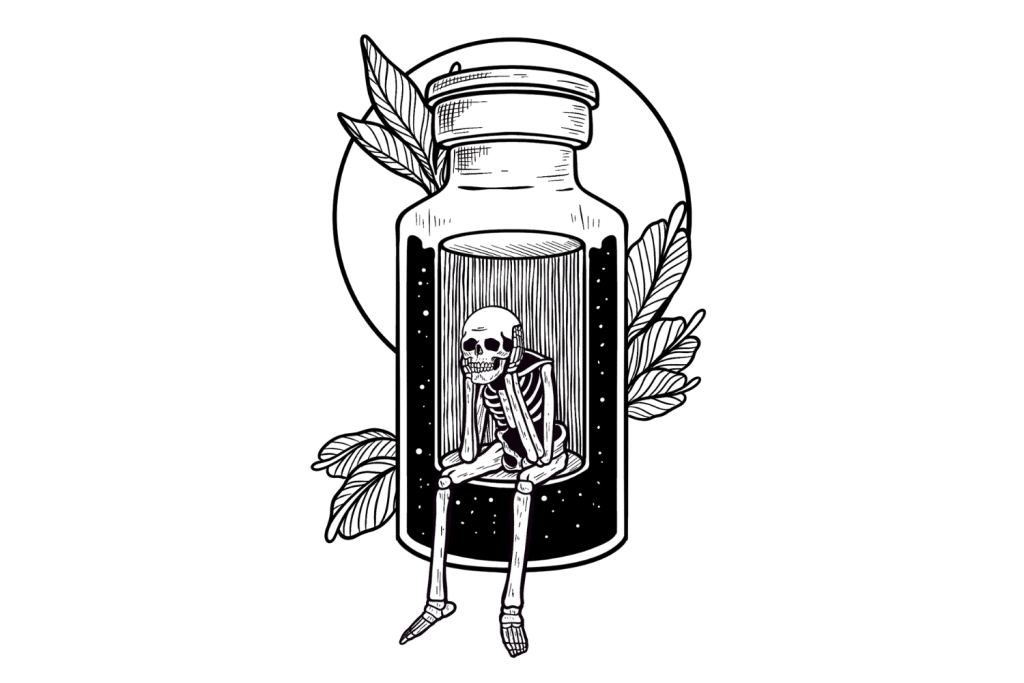
How Spravato (and ketamine in general) works for treating depression is still not well understood. But here’s what we know so far:
Ketamine & Synapse Regrowth
Studies have shown that ketamine stimulates the growth of synapses [7]. This is an important finding because no other antidepressant that we know of can do this.
Chronic stress depletes the synapses in certain regions of the brain — especially the medial prefrontal cortex. This region is often implicated in the effects of depression. Researchers in the study gave mice ketamine and observed the formation of tiny spikes on the dendrites of the nerve cells. Spikes that survived for a few days after the treatment eventually formed into new synapses.
This effect is likely what causes the long-term benefits of using ketamine. However, this process takes a few days, so there must be other mechanisms that provide more fast-acting effects on depression.
The mechanism ketamine uses to cause this effect is extremely complicated and involves a cascade of effects [10, 11]. It’s believed ketamine has a greater affinity for glutamate receptors that are located on GABA interneurons, which are inhibitory neurons [12].
Ketamine blocks the effects of these neurons, which cause a downstream increase in glutamate. Excess glutamate activates postsynaptic AMPA receptors, which bolster the effects of BDNF and mTORC1 — which are ultimately responsible for the regrowth of synapses.
Unfortunately, there’s little evidence to suggest that ketamine has a lasting impact on depression. Most studies show that ketamine requires another dose every 2–3 weeks to maintain the antidepressant effects.
Blood Sugar Regulation
Ketamine has been shown to regulate blood sugar levels in regions of the brain associated with depression [6].
It’s not clear whether this has a direct benefit on depressive symptoms or if it’s a byproduct of other improvements in these brain regions.
Circadian Rhythm Regulation
Ketamine has been shown to improve the body’s ability to regulate the circadian rhythm [9]. Researchers are still seeking to understand whether these improvements come as a result of improved mood or if this effect contributes to the greater mood regulation instead.
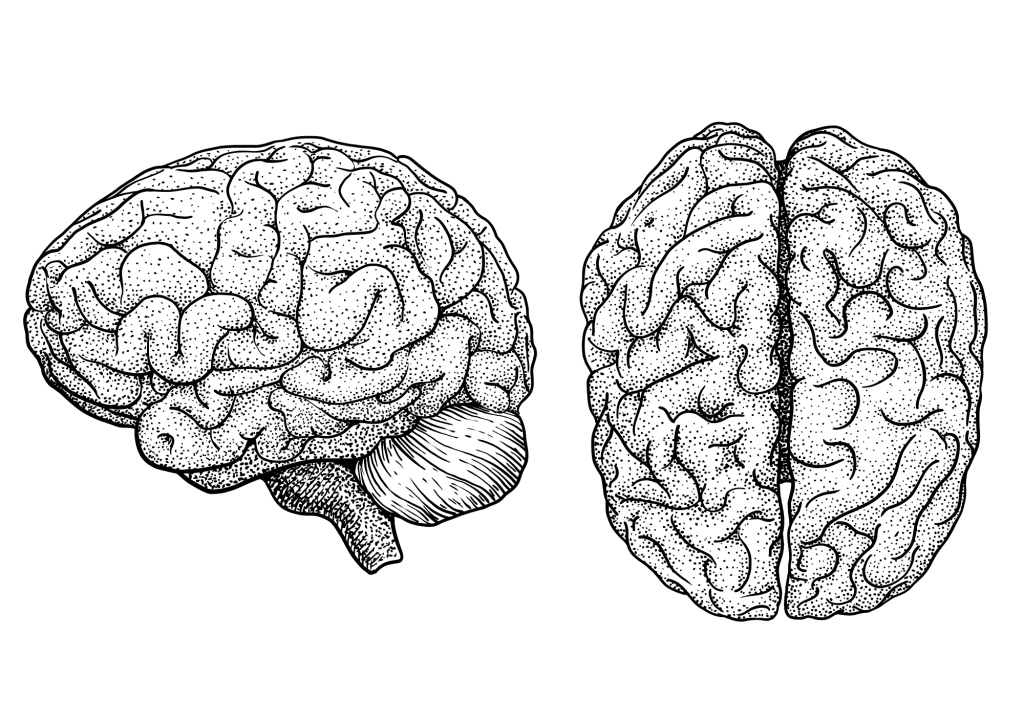
3. Ketamine For Pain
Ketamine is becoming a popular alternative treatment option for tough to treat chronic pain conditions such as fibromyalgia, complex regional pain syndrome (CRPS),postoperative pain, and neuropathic pain.
Research in this field is still evolving, but more studies are released showing promising results for certain types of pain conditions all the time [17].
For example, a meta analysis published in 2011 involving over 4700 patients found a significant reduction in total postoperative opioid use [15]. Researchers in this study suggested that patients administered ketamine as part of their post-operative pain management protocols were able to cease opiate medications sooner than those using only opiates. This suggests both an analgesic action and anti-addictive action for ketamine.
However, the effectiveness of ketamine for managing pain remains inconclusive.
For example, a meta analysis examining studies using ketamine for cancer pain reported that relief only lasted 3-hours and resulted in a high incidence of neurological side effects [16]. Another large-scale meta analysis looking at the role of ketamine as an analgesic for post-operative pain reported no sizeable advantage to using ketamine (poorer pain reduction and increased neurological side effects) [18].
Ketamine is an interesting analgesic option because it targets several neurotransmitter systems involved with pain transmission. This includes the mu-opiate receptors which are the target for powerful and commonly-used pain medicines like oxycontin, morphine, and hydrocodone.
However, unlike these classic pain medications, ketamine also interacts with other systems, such as the NMDA receptors, serotonin, and dopamine. Some researchers believe these other pathways are the reason why ketamine works so well in patients that haven’t found relief from their chronic pain using more conventional painkillers.
Related: Is Ketamine an Opiate?
Ketamine in Veterinary Medicine
Ketamine is widely used in veterinarian medicine as an anesthetic for dogs, cats, and horses undergoing surgery.
It’s considered an ideal anesthetic because of its impressive safety profile compared to other anaesthetic agents.
The History of Ketamine
The primary reason ketamine was developed was to offer a replacement for PCP (phencyclidine) — which was the primary analgesic used for surgery prior to 1970.
Scientists have been searching for an alternative to PCP for a long time. While this drug worked to stop pain and suffering during surgical procedures and after severe traumatic injuries, it often led to long-term side effects like psychosis.
Ketamine was first synthesized by Calvin L. Stevens in 1962. At the time, Stevens was a professor of Chemistry at Wayne State University and worked as a consultant for the Pfizer Pharmaceutical subsidiary, Parke-Davis.
Ketamine (then called CI-581) was first tested on animals and showed very promising results as an analgesic. It was then tested (involuntarily) on prisoners in 1964 [1]. The results of these studies were enough to prove ketamine was just as effective as PCP, only with a much lower risk of side effects. The drug was finally approved in 1970 for use in medicine, and PCP was quickly removed from service.
S-ketamine vs. R-ketamine: What’s The Difference?
Most drugs come in two different enantiomers.
Enantiomers are chemicals that have the exact same chemical structure but are mirror images of each other. Just like your right and left hand. Both hands have the same shape, but in order for them to share the same outline, you have to flip one of them upside down.
There are two enantiomers for ketamine — the “R” and “S” enantiomers.
Ketamine contains both of them at a ratio of around 1:1.
Esketamine (S-ketamine) contains only the “S” ketamine, which is the stronger of the two molecules. S-ketamine is also reported to produce 1.6 times the level of altered body image and hearing, 2.5 times stronger feelings of unreality, and four times the reduction in visual acuity.
What is Kitty Flipping?
Kitty flipping is the practice of mixing ketamine with MDMA. The effects are reported to share a blend of the empathogenic and euphoric effects of MDMA, with the dissociative effects of ketamine. This blend is commonly used at raves or music festivals.
It’s not wise to mix psychedelic drugs, especially synthetic drugs that could contain any number of adulterants already. Always test your substances before you take them, and use a smaller dose should you decide to mix two or more substances together.

What the Future of Ketamine Looks Like
There’s been a growing interest in ketamine surrounding its use as an antidepressant. This is largely due to the fact that this drug works through a mechanism not offered by any of the conventional antidepressant medications.
As more research uncovers how ketamine works, it’s likely we’ll see this drug become more common for people with treatment-resistant depression.
What’s even more likely, is that new (hopefully safer) drugs will be developed that share similar mechanisms of action but that can offer more long-lasting benefits.
The recreational use of ketamine is likely to continue to thrive in the shadows. There have not been any moves to make recreational ketamine use more accessible.
Subscribe to Tripsitter: Newsletter & Podcast
Unlock Your Mind: Subscribe for Expert Insights on Psychedelics 🍄🌵
References
- Domino, E. F., & Warner, D. S. (2010). Taming the ketamine tiger. The Journal of the American Society of Anesthesiologists, 113(3), 678-684.
- Visser, E., & Schug, S. A. (2006). The role of ketamine in pain management. Biomedicine & Pharmacotherapy, 60(7), 341-348.
- Persson, J. (2013). Ketamine in pain management. CNS neuroscience & therapeutics, 19(6), 396-402.
- Abelson, K. S., Goldkuhl, R. R., Nylund, A., & Höglund, A. U. (2006). The effect of ketamine on intraspinal acetylcholine release: involvement of spinal nicotinic receptors. European journal of pharmacology, 534(1-3), 122-128.
- Hocking, G., & Cousins, M. J. (2003). Ketamine in chronic pain management: an evidence-based review. Anesthesia & Analgesia, 97(6), 1730-1739.
- Lally, N., Nugent, A. C., Luckenbaugh, D. A., Ameli, R., Roiser, J. P., & Zarate, C. A. (2014). Anti-anhedonic effect of ketamine and it’s neural correlates in treatment-resistant bipolar depression. Translational psychiatry, 4(10), e469-e469.
- Li, L., & Vlisides, P. E. (2016). Ketamine: 50 years of modulating the mind. Frontiers in human neuroscience, 10, 612.
- Moda-Sava, R. N., Murdock, M. H., Parekh, P. K., Fetcho, R. N., Huang, B. S., Huynh, T. N., … & Lopez, K. (2019). Sustained rescue of prefrontal circuit dysfunction by antidepressant-induced spine formation. Science, 364(6436).
- Duncan Jr, W. C., Slonena, E., Hejazi, N. S., Brutsche, N., Kevin, C. Y., Park, L., … & Zarate Jr, C. A. (2017). Motor-activity markers of circadian timekeeping are related to ketamine’s rapid antidepressant properties. Biological psychiatry, 82(5), 361-369.
- Matveychuk, D., Thomas, R. K., Swainson, J., Khullar, A., MacKay, M. A., Baker, G. B., & Dursun, S. M. (2020). Ketamine as an antidepressant: an overview of its mechanisms of action and potential predictive biomarkers. Therapeutic Advances in Psychopharmacology, 10, 2045125320916657.
- Abdallah, C. G., Sanacora, G., Duman, R. S., & Krystal, J. H. (2015). Ketamine and rapid-acting antidepressants: a window into a new neurobiology for mood disorder therapeutics. Annual review of medicine, 66, 509-523.
- Zorumski, C. F., Izumi, Y., & Mennerick, S. (2016). Ketamine: NMDA receptors and beyond. Journal of Neuroscience, 36(44), 11158-11164.
- Hansen, G., Jensen, S. B., Chandresh, L., & Hilden, T. (1988). The psychotropic effect of ketamine. Journal of Psychoactive Drugs, 20(4), 419-425.
- Ben-Shlomo, I., Katz, Y., Rosenbaum, A., & Hadash, O. (2001). Intravenous midazolam significantly enhances the lethal effect of thiopental but not that of ketamine in mice. Pharmacological research, 44(6), 509-512.
- Laskowski, K., Stirling, A., Mckay, W. P., & Lim, H. J. (2011). A systematic review of intravenous ketamine for postoperative analgesia. Canadian Journal of Anesthesia, 58(10), 911.
- Jonkman, K., van de Donk, T., & Dahan, A. (2017). Ketamine for cancer pain: what is the evidence?. Current Opinion in Supportive and Palliative Care, 11(2), 88-92.
- Jonkman, K., Dahan, A., van de Donk, T., Aarts, L., Niesters, M., & van Velzen, M. (2017). Ketamine for pain. F1000Research, 6.
- Lee, E. N., & Lee, J. H. (2016). The effects of low-dose ketamine on acute pain in an emergency setting: a systematic review and meta-analysis. PloS one, 11(10), e0165461.

